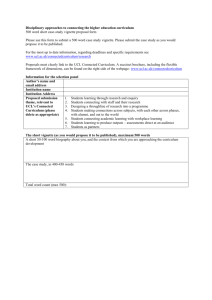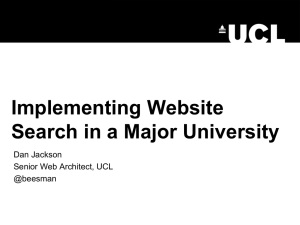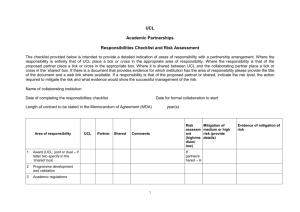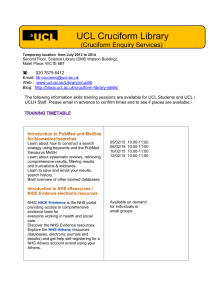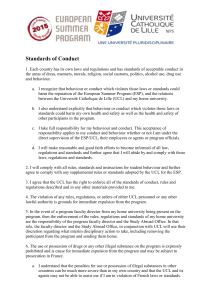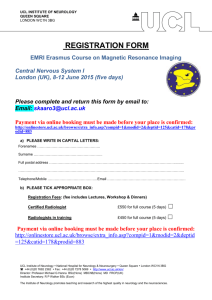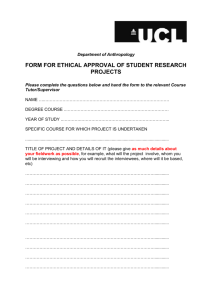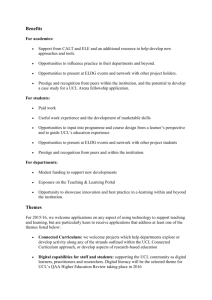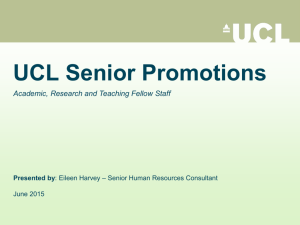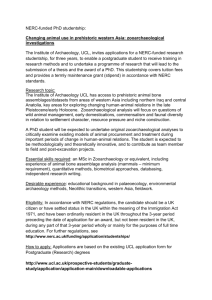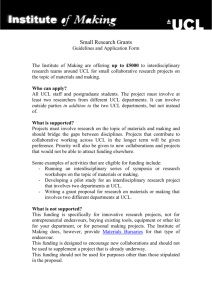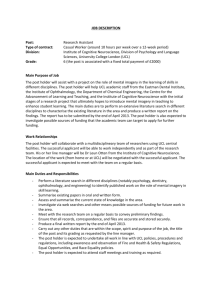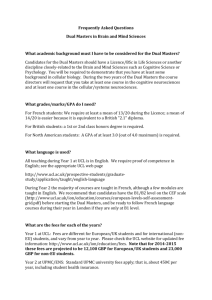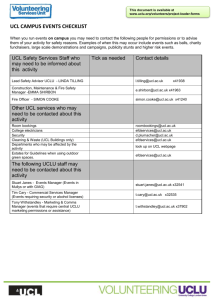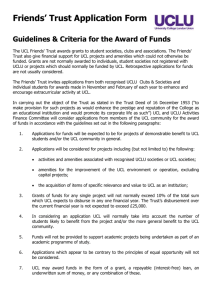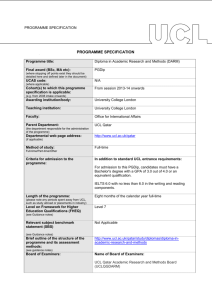Writing for the web
advertisement
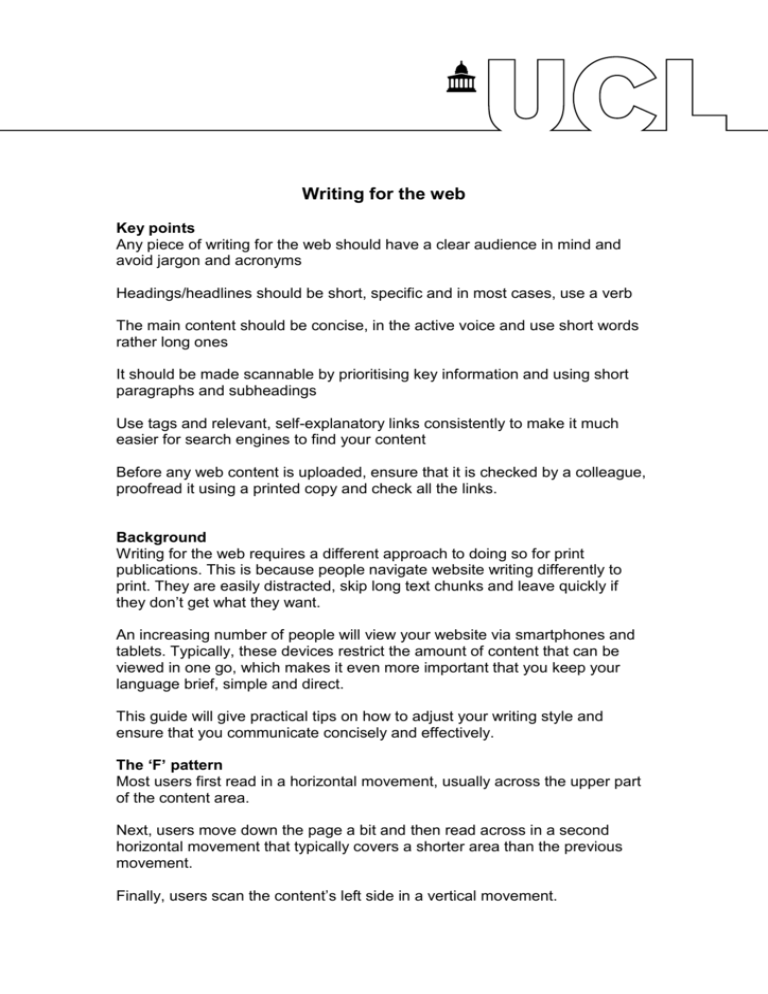
Writing for the web Key points Any piece of writing for the web should have a clear audience in mind and avoid jargon and acronyms Headings/headlines should be short, specific and in most cases, use a verb The main content should be concise, in the active voice and use short words rather long ones It should be made scannable by prioritising key information and using short paragraphs and subheadings Use tags and relevant, self-explanatory links consistently to make it much easier for search engines to find your content Before any web content is uploaded, ensure that it is checked by a colleague, proofread it using a printed copy and check all the links. Background Writing for the web requires a different approach to doing so for print publications. This is because people navigate website writing differently to print. They are easily distracted, skip long text chunks and leave quickly if they don’t get what they want. An increasing number of people will view your website via smartphones and tablets. Typically, these devices restrict the amount of content that can be viewed in one go, which makes it even more important that you keep your language brief, simple and direct. This guide will give practical tips on how to adjust your writing style and ensure that you communicate concisely and effectively. The ‘F’ pattern Most users first read in a horizontal movement, usually across the upper part of the content area. Next, users move down the page a bit and then read across in a second horizontal movement that typically covers a shorter area than the previous movement. Finally, users scan the content’s left side in a vertical movement. Source: Nielsen Norman Group Implications of the ‘F’ pattern Users won’t read your text thoroughly in a word-by-word manner. The first two paragraphs must state the most important information. Various UCL website testing has borne this out, with students, professional and academic staff The rise of mobile devices means that people scan even more for need-toknow information rather than browse. Know your audience Avoid jargon Spell out acronyms and abbreviations the first time that you use them on a page Consider simplifying some of your language when targeting non-native English speakers Demonstrate why the subject matter is relevant to the general reader Don’t make assumptions about knowledge in a particular area Is the content valuable and worthwhile for the reader? Tone The audience that you are trying to address and the channel that you are using should govern the way that you express something in writing. Spoken and written English operate differently, but you should still aim to convey some of the colour and energy that comes across in speech, so that your comment is interesting as well as informative. Hook the reader Use your opening paragraph to entice/intrigue the reader. Summarise the information in a couple of sentences: who, what, why, when etc. If you are writing a blog post, start with a question, a statistic or a controversial comment. Make it snappy Replace or remove repeated words – don’t be afraid of “it”. Use the active voice eg. “Ben loves carrot cake” rather than “Carrot cake is loved by Ben”. Use short words rather than long ones. Make it scannable Frontload your text: o The most important information goes at the top of the page o Key ideas go at the beginning of each paragraph o The main point goes at the beginning of each sentence o The priority keyword goes at the beginning of each heading. Use an inverse pyramid structure: start with key information and gradually add more detail. Write short paragraphs. Include subheadings to break up text. Create bulleted lists for key links and information. Ensure legibility by choosing a font colour that is in clear contrast to the background colour. Make it findable Include relevant links. Make them descriptive and self-explanatory – i.e. “Event programme” not “click here for event programme”. Use tags consistently in blogs. Promote your content through the various channels you use to engage with your audience. Make your headlines work hard Get the gist across. In most cases, use a verb. Be specific. Keep it short and use keywords to boost (search engine optimisation or SEO). Take your time – write it last. Exercise quality control Before uploading any written material: ALWAYS proofread a printed version of what have you written, using the UCL house style guide. Ask a colleague to read it. Test the links. Proofreading essentials The proofreader should not be the writer. Use the UCL house style guide. Proofread using a printed copy not onscreen. Don’t proofread until you have a final, signed-off version of the text. Take breaks – especially with large publications. Proofreading best practice Try to proof in a quiet area, away from distractions. Proof with a dictionary and the UCL house style to hand. Check certain elements in one go to help pick up inconsistencies e.g. headers, footers, page numbers. Make notes of queries with page references as you go . Build in time to resolve issues. Use proofing symbols. If marking up printer’s proofs, use red for literals and blue for questions of style. Good website style: consistency Make sure everyone is clear about your target audiences Agree your key messages and tone of voice Think about how your website will progress over time – what will need to be removed Set up a governance/review process for your site – who owns the content on each page, how often it will need to be reviewed, who signs it off. Make your text accessible Using descriptive links and the structure of headings within the CMS will make it easier for people with a range of impairments and those on slow internet connections to access your content. Adhering to basic accessibility standards is a legal requirement: RNIB guidance. Further information UCL resources UCL house style guide UCL Communications blogging tips Writing compelling copy workshop Powerpoint presentation Proofreading workshop Powerpoint presentation External resources BBC Academy: Writing for the web The Guardian/Observer style guide The Elements of Style, William Strunk and E. B. White A manifesto for the simple scribe, Tim Radford Contact: Ben Stevens, Content Producer (Editor): benjamin.stevens@ucl.ac.uk

